080000 - Openings
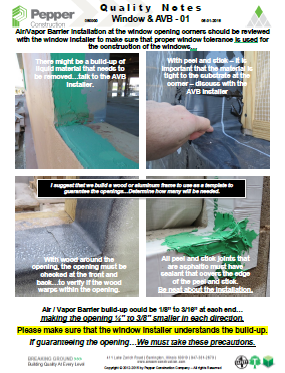
Window Opening AVB Detailing 01 - QN
- Corey S Zussman, AIA
- Link
Air/vapor barrier installation at the window opening corners should be reviewed with the window installer to make sure that proper window tolerance is used for the construction of the windows.
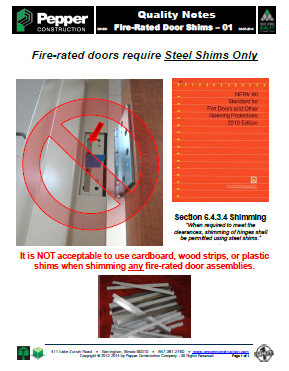
Fire Rated Door Shims 01 - QN
- Corey S Zussman, AIA
- Link
Fire-rated doors require steel shims only. It is NOT acceptable to use cardboard, wood strips, or plastic shims when shimming any fire-rated door assemblies.
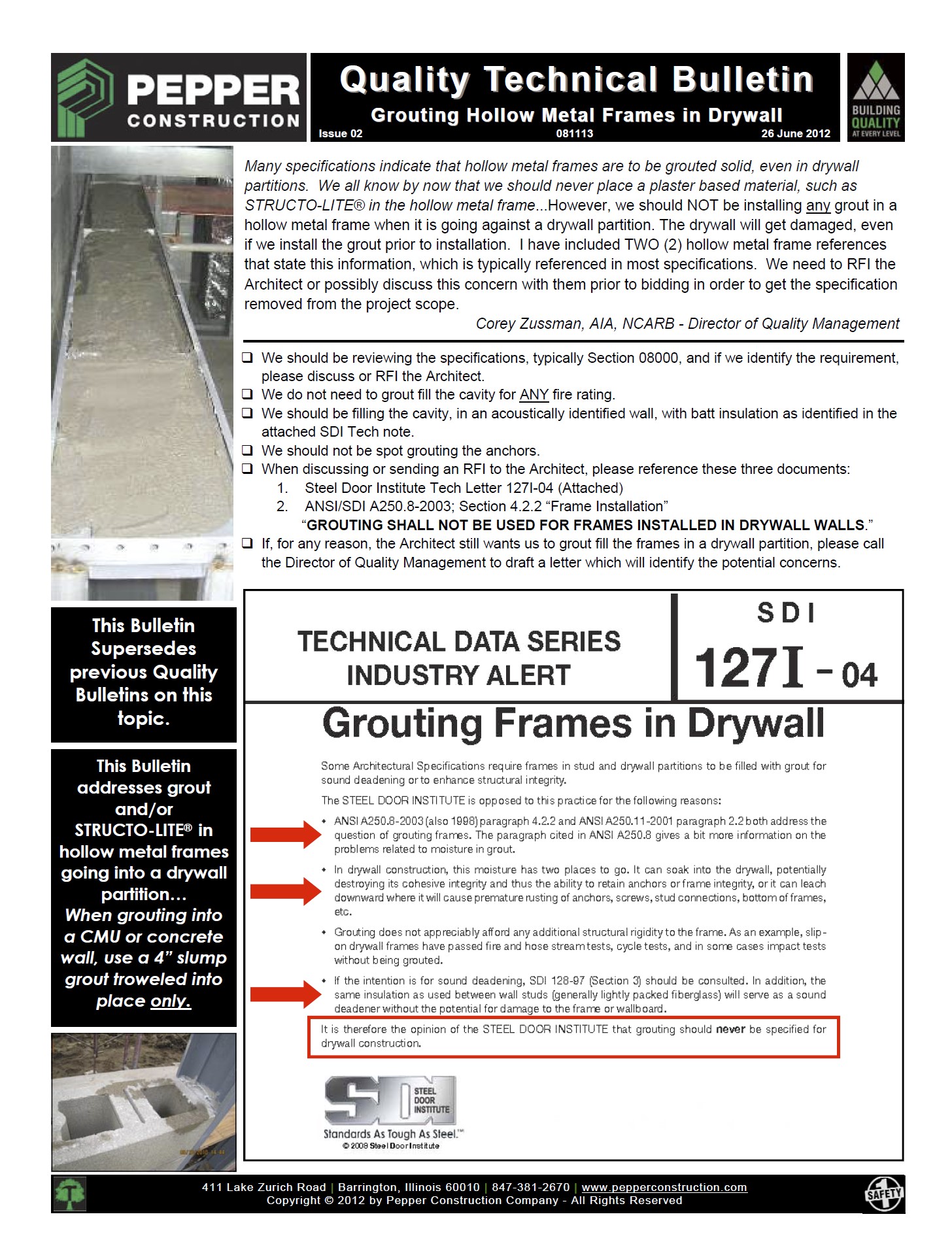
Back Coating on HM Frames - Issue 51
- Corey S Zussman, AIA
- Link
Many projects have specifications which have us install a back-coating on the hollow metal frames prior to installing grout. This coating product is usually a bituminous product, which is flammable and will void theUL label of any UL-labeled frame, unless specifically UL tested for both products installed. We alsosometimes have specifications that specify using a plaster-based materiel in lieu of mortar. This plastermaterial causes more problems with the frames and should not be installed per HMMA (Hollow Metal Manufacturers Association). We need to discuss with the architect and/or owner should these two issues come up in the project specifications. Please take the time to review your projects.

HM Door Grouting in Drywall Partition - Issue 02
- Corey S Zussman, AIA
- Link
Many specifications indicate that hollow metal frames are to be grouted solid, even in drywall partitions. We all know by now that we should never place a plaster based material, such asSTRUCTO-LITE® in the hollow metal frame...However, we should NOT be installing any grout in ahollow metal frame when it is going against a drywall partition. The drywall will get damaged, evenif we install the grout prior to installation. I have included TWO (2) hollow metal frame references that state this information, which is typically referenced in most specifications. We need to RFI the Architect or possibly discuss this concern with them prior to bidding in order to get the specificationremoved from the project scope.
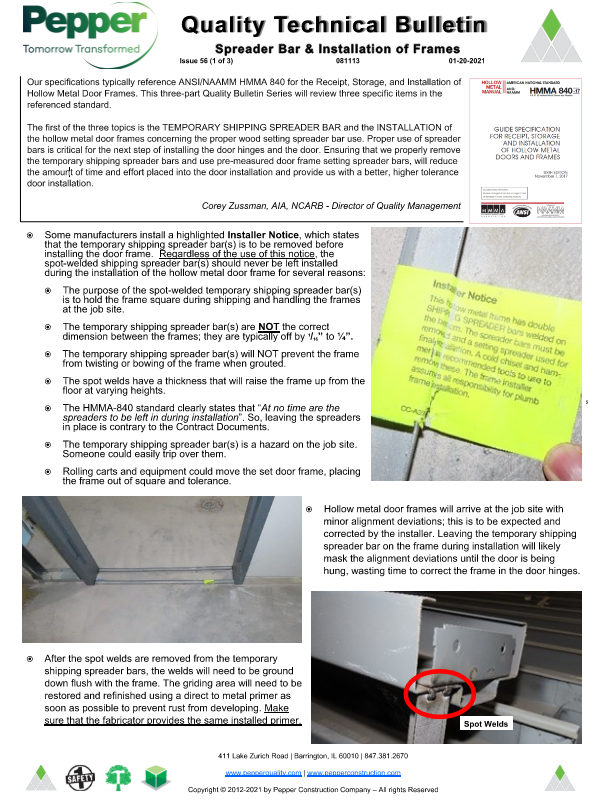
HMMA 840 HM Door Frame Delivery Spreader Bar - Issue 56 (1 of 3)
- Corey S Zussman, AIA
- Link
Our specifications typically reference ANSI/NAAMM HMMA 840 for the Receipt, Storage, and Installation of Hollow Metal Door Frames. This three-part Quality Bulletin Series will review three specific items in the referenced standard. The first of the three topics is the TEMPORARY SHIPPING SPREADER BAR and the INSTALLATION of the hollow metal door frames concerning the proper wood setting spreader bar use. Proper use of spreader bars is critical for the next step of installing the door hinges and the door. Ensuring that we properly remove the temporary shipping spreader bars and use pre-measured door frame setting spreader bars, will reduce the amount of time and effort placed into the door installation and provide us with a better, higher tolerance door installation.
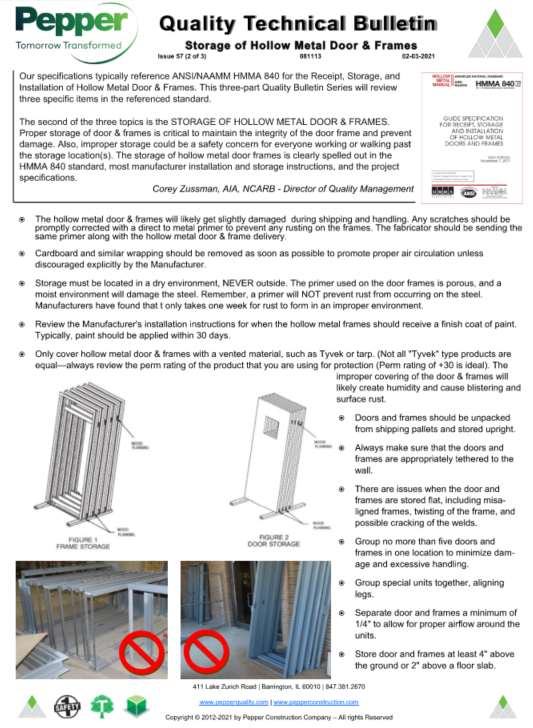
HMMA 840 Storage - Issue 57 (2 of 3)
- Corey S Zussman, AIA
- Link
Our specifications typically reference ANSI/NAAMM HMMA 840 for the Receipt, Storage, and Installation of Hollow Metal Door & Frames. This three-part Quality Bulletin Series will review three specific items in the referenced standard. The second of the three topics is the STORAGE OF HOLLOW METAL DOOR & FRAMES. Proper storage of door & frames is critical to maintain the integrity of the door frame and prevent damage.
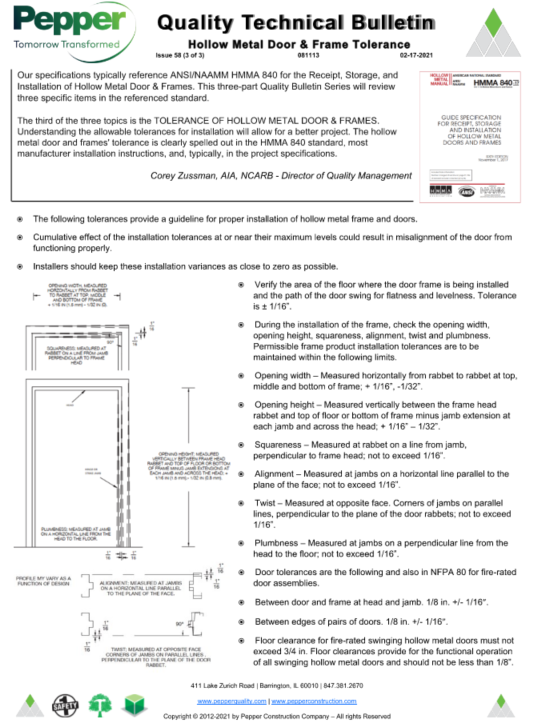
HMMA 840 Tolerance - Issue 58 (3 of 3)
- Corey S Zussman, AIA
- Link
Our specifications typically reference ANSI/NAAMM HMMA 840 for the Receipt, Storage, and Installation of Hollow Metal Door & Frames. This three-part Quality Bulletin Series will review three specific items in the referenced standard. The third of the three topics is the TOLERANCE OF HOLLOW METAL DOOR & FRAMES. Understanding the allowable tolerances for installation will allow for a better project.
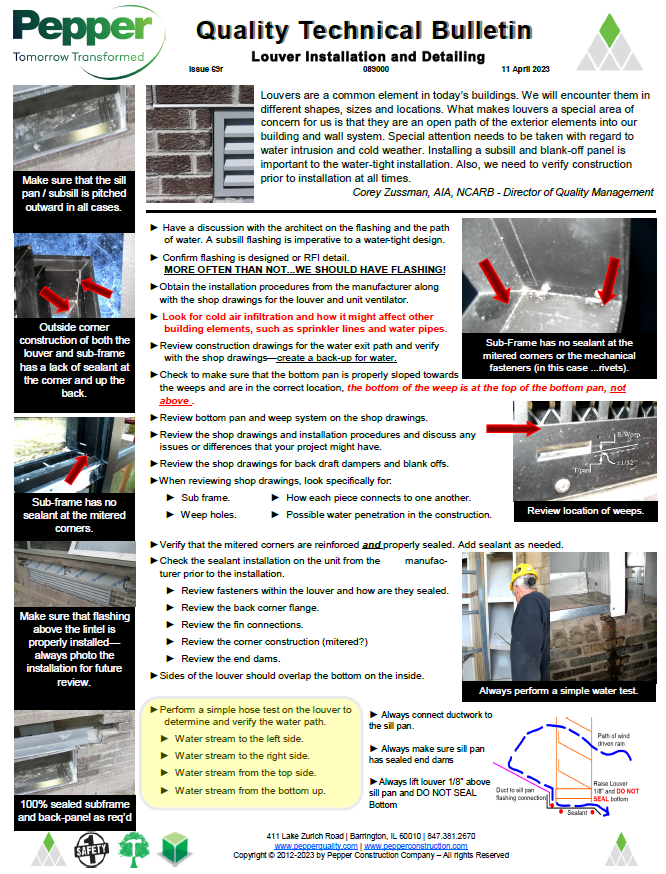
Louver Installation - Issue 69r
- Corey S Zussman, AIA
- Link
Louvers are a common element in today’s buildings. We will encounter them in different shapes, sizes and locations. What makes louvers a special area of concern for us is that they are an open path of the exterior elements into our building and wall system.
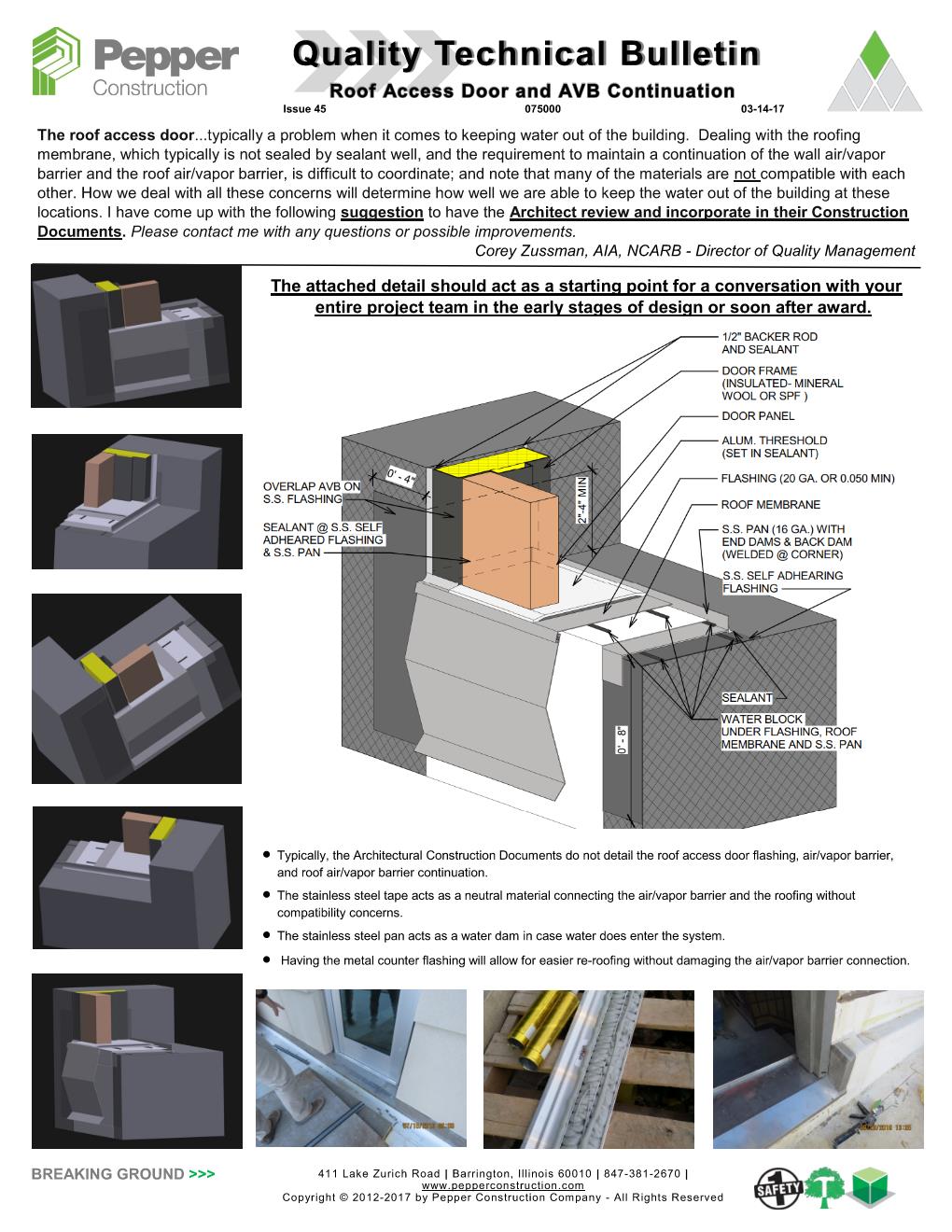
Roof Access Door Sill Detailing Issue 45
- Corey S Zussman, AIA
- Link
The roof access door ...typically a problem when it comes to keeping water out of the building. Dealing with the roofing membrane, which typically is not sealed by sealant well, and the requirement to maintain a continuation of the wall air/vapor barrier and the roof air/vapor barrier, is difficult to coordinate; and note that many of the materials are not compatible with each other. How we deal with all these concerns will determine how well we are able to keep the water out of the building at these locations. I have come up with the following suggestion to have the Architect review and incorporate in their Construction Documents. Please contact me with any questions or possible improvements.
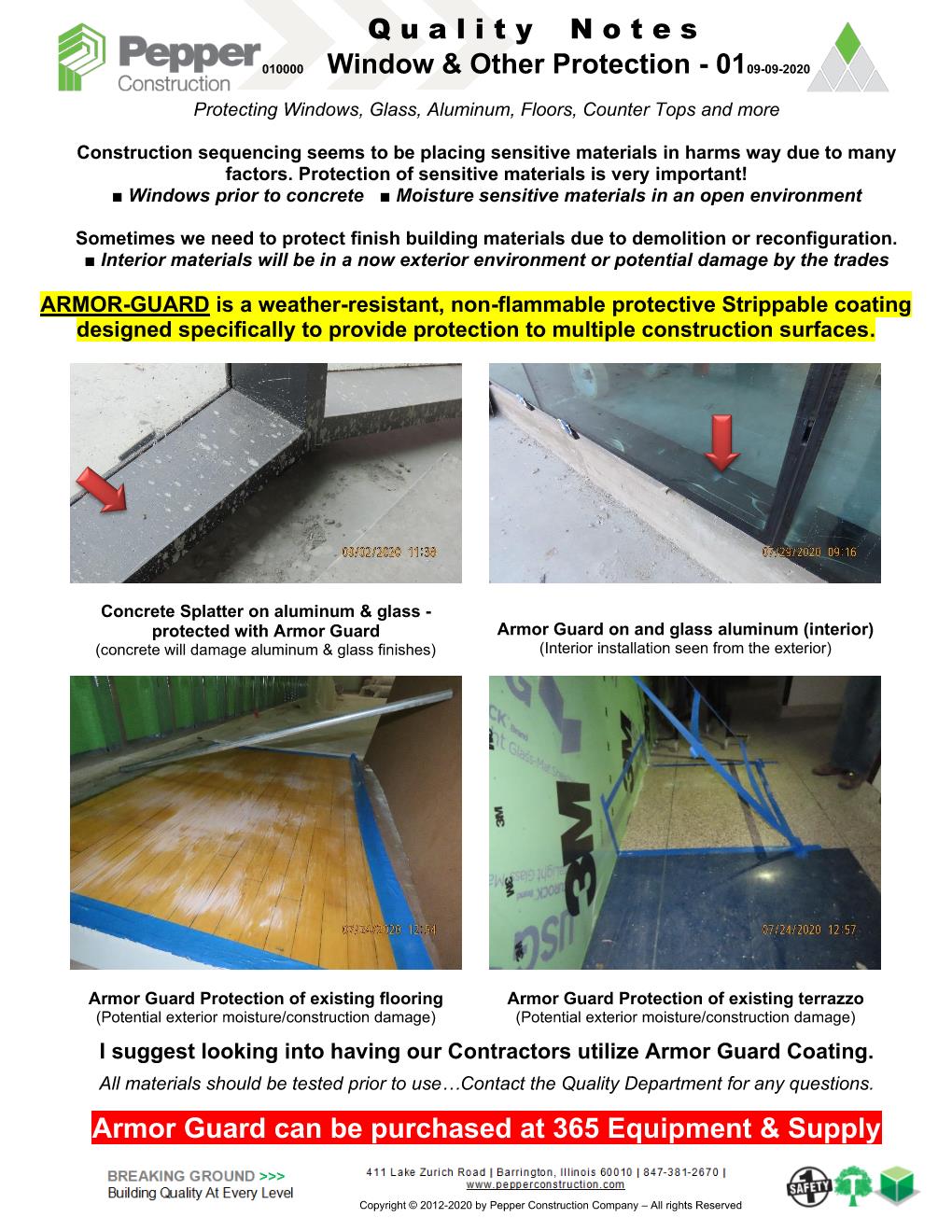
Window Protection QN
- Corey S Zussman, AIA
- Link
Construction sequencing seems to be placing sensitive materials in harms way due to many factors. Protection of sensitive materials is very important! ■ Windows prior to concrete ■ Moisture-sensitive materials in an open environment: Sometimes, we need to protect finished building materials due to demolition or reconfiguration. ■ Interior materials will be in a now exterior environment or potentially damaged by the trades
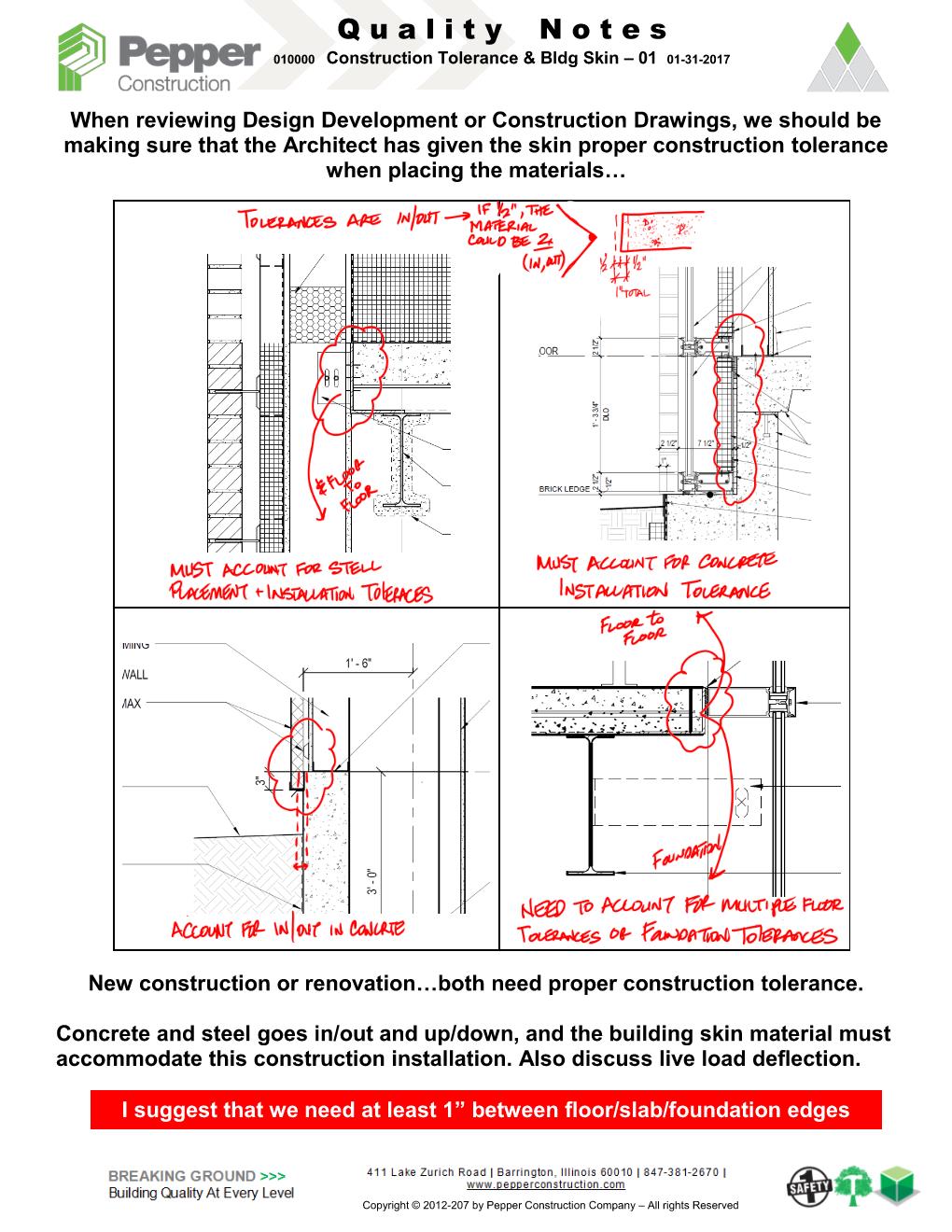
Building Envelope Tolerances QN
- Corey S Zussman, AIA
- Link
When reviewing Design Development or Construction Drawings, we should be making sure that the Architect has given the skin proper construction tolerance when placing the materials…
